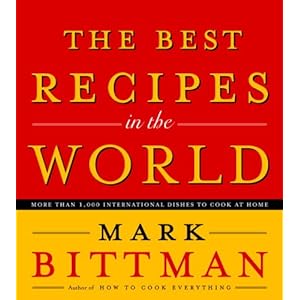But I'll wager that my "person with whom I'd most like to have dinner" (aside from Barack Obama, of course) is rather unique: Mort Rosenblum, my favorite food writer.
Mort is not technically a food writer nor a celebrity. He's a former foreign correspondent for the Associated Press, and he's written more words on war than on food. But I haven't read any of that war stuff.
I first discovered Mort in the remainder bin of a bookstore. The book was "Olives: The Life and Lore of a Noble Fruit", and the price was right: $5.98. I was immediately mesmerized. I read passages aloud to my husband to impress him with the clever phrasing. At some point, I looked at the author's bio and exclaimed, "John! This guy works for the AP! Do you know him?" (My husband is also an AP correspondent, but in a much less-glamorous location than Mort's Paris). John said that yes, he knew Mort was one of AP's star foreign correspondents but had no idea he had written a book on food.

Well, Mort didn't write just one book on food. He's written three, and they are all superb. After "Olives" came the enchanting French culinary adventure tale, "A Goose in Toulouse," and then his pièce de résistance, "Chocolate: A Bittersweet Saga of Light and Dark". This book has an entire chapter on Nutella! I didn't want to just read "Chocolate", I wanted to disappear into the pages as if they were a magic wardrobe that could transport me to a cacao farm on an island off the coast of Africa, or to a tiny artisan chocolaterie in Paris. I wanted to meet his guide, Chloë, who surely has the best job on the planet, being paid to taste chocolate.
For a few years, I harbored fantasies of meeting Mort. I knew from his books that he is friends with the owner of Ann Arbor's food wonder, Zingerman's, so that gives him a bit of a Michigan connection. Plus there was the AP link. Back when the Michigan members of the AP had an annual meeting every summer, at which a notable journalist would be invited to give a keynote address, I asked John to lobby his boss to invite Mort to be that speaker. Since John's boss' wife is a food writer, I thought she might support my campaign, but I suspect that John never even mentioned it, and now those meetings don't happen anyway.
"Chocolate" was published in 2006 and I've seen no hint of another Mort food book. His last two titles have been about journalism; I gave John "Escaping Plato's Cave" a couple of years ago as a Christmas gift, and he said it was good. All indications are that my favorite food writer is finished with writing about food, so I shall have to make do with re-reading the three.
The next title on my reading list comes from my second favorite food writer, Michael Pollan. My book group has chosen his "In Defense of Food" for our February selection. I'm sure it will be excellent, and I will review it here, but I don't expect it to have the magic that is Mort.










